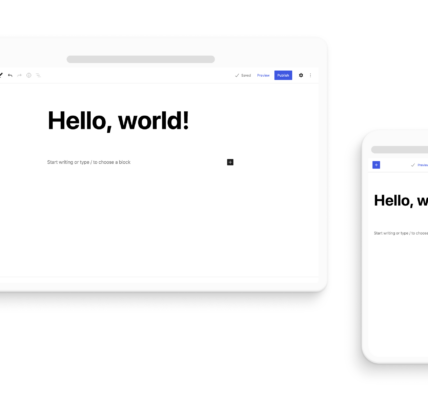WordPress has evolved from a simple blogging platform to a versatile content management system, powering millions of websites worldwide. Whether you’re a blogger, entrepreneur, or developer, mastering WordPress can elevate your online presence. This comprehensive guide unveils the path to becoming a WordPress pro, covering everything from basic setup to advanced customization and optimization.

Understanding the Basics
1. Installation and Setup
Begin your journey by installing WordPress. Many hosting providers offer one-click installations, simplifying the process. Familiarize yourself with the dashboard, where you’ll manage your site’s content, appearance, and functionality.
2. Exploring Themes
Themes define your site’s appearance. Discover the vast library of free and premium themes. Choose one that aligns with your website’s purpose and customize it to create a unique and professional look.
3. Mastering Plugins
Plugins extend WordPress functionality. Learn to navigate the extensive plugin directory. Essential plugins enhance security, optimize performance, and add features. Keep plugins updated for security and compatibility.
Content Creation and Management
4. Creating Compelling Content
Content is king. Craft engaging posts and pages. Utilize the Gutenberg block editor for a visual and intuitive content creation experience. Experiment with multimedia elements, such as images, videos, and infographics.
5. Understanding Categories and Tags
Organize content effectively using categories and tags. This enhances navigation for both visitors and search engines. Consistent categorization contributes to a well-structured and user-friendly website.
6. Optimizing for SEO
Mastering SEO is pivotal. Utilize plugins like Yoast SEO to optimize content for search engines. Focus on keyword research, meta tags, and creating SEO-friendly URLs for improved visibility.
Advanced Customization
7. Customizing with Child Themes
Dive into advanced customization by creating child themes. This ensures that your modifications won’t be overwritten during theme updates. Child themes provide a stable foundation for tailored design.
8. Exploring the Customizer
The Customizer is your go-to tool for real-time site customization. Adjust site identity, colors, fonts, and more. Preview changes before making them live, ensuring a seamless design process.
9. Mastering CSS and HTML
Expand your skill set by delving into CSS and HTML. Customize your site with precision by adding custom code snippets. Understand the structure of WordPress themes for more profound alterations.
Website Optimization
10. Performance Optimization
Optimize your site for speed. Compress images, leverage browser caching, and utilize content delivery networks (CDNs). Fast-loading websites improve user experience and SEO rankings.
11. Responsive Design
Ensure your site looks impeccable on all devices. Implement responsive design principles, allowing your website to adapt to various screen sizes. Google prioritizes mobile-friendly sites in search results.
12. Securing Your WordPress Site
Security is paramount. Regularly update WordPress, themes, and plugins. Install security plugins and employ best practices, such as strong passwords and secure hosting, to fortify your website against threats.
Monetization and Growth
13. Exploring Monetization Options
If your goal is to monetize your site, explore various options. Advertisements, affiliate marketing, sponsored content, and selling products or services are common revenue streams.
14. Building a Subscriber Base
Cultivate a loyal audience by building a subscriber base. Implement email marketing strategies using plugins like Mailchimp or SendinBlue. Keep your audience engaged with newsletters and exclusive content.
15. Social Media Integration
Extend your reach by integrating social media. Share content seamlessly across platforms. Utilize social media plugins to display feeds on your site, encouraging interaction and fostering a sense of community.
Troubleshooting and Support
16. Diagnosing and Fixing Common Issues
Troubleshoot common WordPress issues such as the white screen of death, plugin conflicts, or theme problems. Learn to identify and resolve issues promptly to maintain a seamless user experience.
17. Utilizing WordPress Forums and Communities
Join WordPress forums and communities for ongoing learning and support. Engage with experienced users, seek advice, and contribute to discussions. The WordPress community is a valuable resource for problem-solving.
Continuous Learning and Adaptation
18. Staying Updated with WordPress News
Stay abreast of the latest WordPress developments. Follow official WordPress blogs, podcasts, and community updates. Continuous learning ensures you adapt to new features and industry trends.
19. Experimenting with New Features
WordPress frequently introduces new features. Experiment with Gutenberg updates, block patterns, and other innovations. Embrace change and leverage new tools to enhance your website.
20. Contributing to the WordPress Ecosystem
Give back to the WordPress community by contributing to the ecosystem. Report bugs, submit patches, or create plugins and themes. Active participation enhances your skills and enriches the WordPress ecosystem.
Conclusion
Becoming a WordPress pro is a dynamic journey that blends technical skills with creativity and adaptability. Whether you’re a blogger, business owner, or developer, mastering WordPress empowers you to create, customize, and optimize websites with finesse. Embrace the learning process, stay curious, and let your WordPress proficiency evolve alongside the ever-growing capabilities of this versatile platform.






